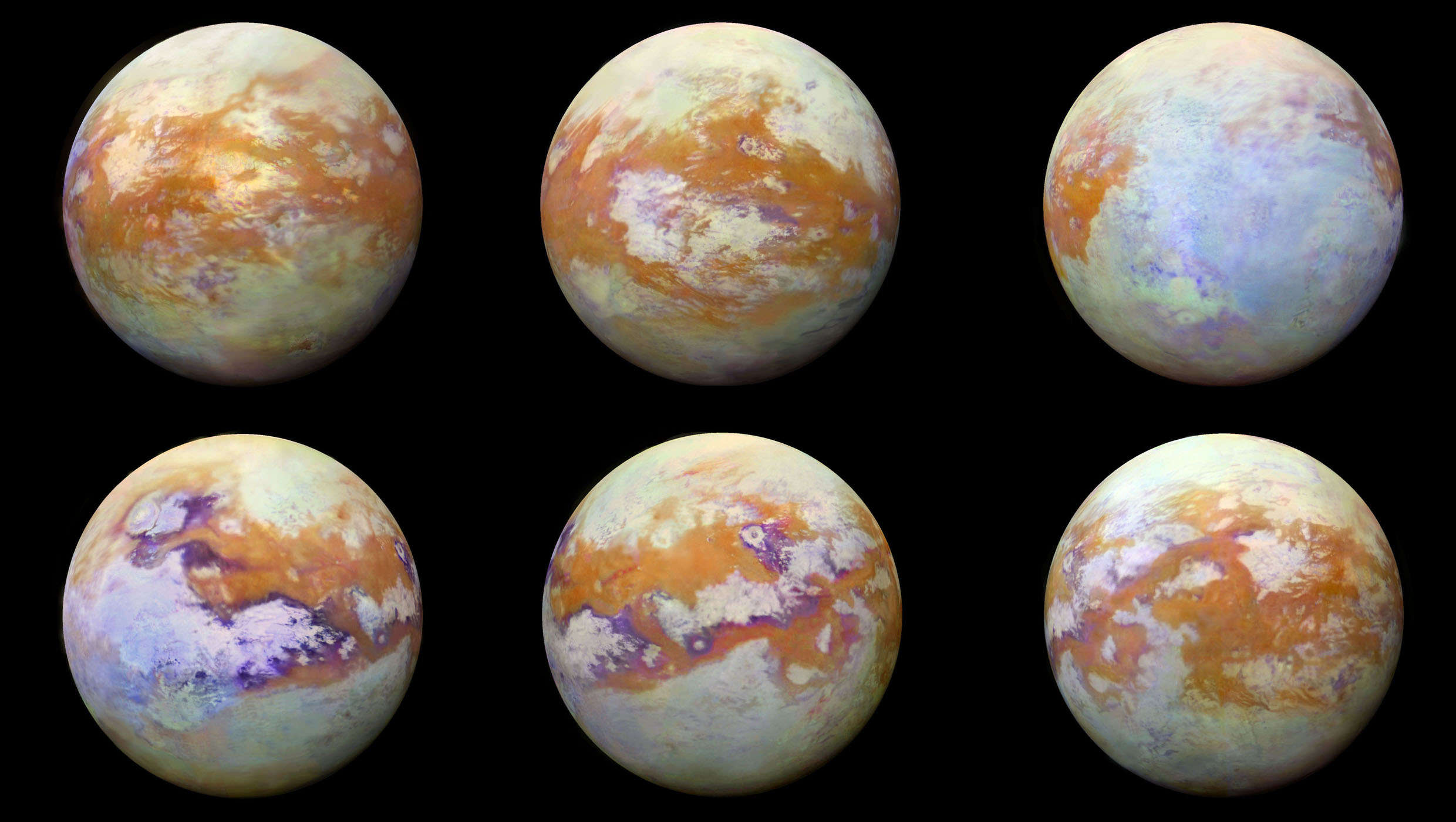Create a free profile to get unlimited access to exclusive videos, sweepstakes, and more!
Bizarre molecule discovered on Titan has never been found on any moon or planet, ever

As if Saturn’s moon Titan wasn’t already weird enough, scientists have now found something weirder in its atmosphere, and no, it’s not aliens — yet.
There is an extremely rare carbon-based molecule that can only exist in a lab on Earth because it’s so reactive. The only other place it has ever been found is the void of space, floating around in clouds of dust and gas where particles have been dispersed too far away from each other to give it anything to react with. NASA scientists have now found the elusive C3H2, or cyclopropenylidene, molecule in the atmosphere of Titan. Never mind that this is the first time C3H2 has ever been detected in a planetary atmosphere; it is also the type of molecule that can build the backbone of DNA. So it’s not aliens, but it may or may not mean aliens.
C3H2 is so strange because it doesn't typically behave like you would expect a molecule containing carbon to behave. Carbon is something of an extrovert. It has four electrons in its outer level, so it tends to form four molecular bonds whenever it can. However, C3H2 is a type of molecule known as a carbine. These molecules only form bonds with two of the electrons in their carbon atoms, leaving the other two to bond with each other, which is about as awkward as being one of the only people in your senior class not to get a prom date. Say there were two best friends who both had zero luck finding anyone to go with. C3H2 is so reactive because these awkward electrons will immediately bond with the first potential dates they find.
“Electrons in a carbene are very hungry to form bonds with electrons from other atoms or molecules that drift by,” NASA Goddard planetary scientist Conor Nixon, who led a study recently published in The Astronomical Journal, told SYFY WIRE. “They will pair up with other unpaired electrons in other atoms, or even break bonds in other molecules and insert themselves (if it sounds like a lot of relationship drama, it basically is).”
Yes, a NASA scientist actually compared molecular bonding with relationship drama. That is how intense things can get with C3H2.
Carbenes are not the types of things you would expect to find in a planetary atmosphere because they obviously waste no time bonding, and atmospheres are much denser than the void. A dense atmosphere means there are plenty of molecules dancing at that prom. Any carbenes around other molecules would soon react with them and turn into something else, so they would no longer show up as carbenes to scientists looking for them. Then why are all those lonely C3H2 molecules wandering around above Titan? Nixon believes that it is because of all the methane (CH4) in the moon’s atmosphere. CH4 can break down into carbon and hydrogen atoms which can then reconfigure themselves in many ways, and one of those is C3H2.
“The lack of oxygen in Titan’s atmosphere means that the C and H atoms don’t do what they would do on Earth, Mars, or Venus, which is to ‘combust’ (oxidize) and form CO2 and water,” he said.
So about the possibility for aliens. Methane-eating bacteria exist on Earth, and on Titan, methane is not just in the atmosphere, but also falls to the surface as rain and is thought to exist as entire lakes and seas. Primordial Earth had hardly any oxygen in its atmosphere before what is known as the “great oxidation event” that happened 2 to 2.4 billion years ago. It was a planet we wouldn’t recognize, crawling with photosynthetic microorganisms known as cyanobacteria, which are now better known as blue-green algae. These eventually multiplied enough to give the atmosphere a major oxygen boost. Titan’s atmospheric chemistry is very similar to what Earth’s was then. The problem is that there is too much that remains unknown about nascent Earth, so scientists don't exactly know what to expect when looking for processes that could lead to life.
What we do know about C3H2 in relation to living organisms is that it is a closed-loop molecule or closed system. These molecules do not allow a transfer of matter outside of themselves, and the only other one found on Titan is benzene. The reason closed-loop molecules have NASA excited is that these are the same type of rings that form nucleobases, nitrogen-containing compounds which make up the more complex components of DNA and RNA. The space agency’s upcoming Dragonfly mission might find out.
“We don’t know how the gap was bridged between large molecules and life,” said Nixon. “It’s exciting just to see and investigate what is happening on Titan, since that gives us some insight into that period of time in the Earth’s history, and may ultimately help to clear up some of the mysteries.”
Could there possibly be C3H2 hiding in the atmospheres of other moons or planets? If it is, it probably is in the atmosphere and not on the surface, because it is unlikely to reach the surface of Titan in its original form. It probably reacts with something long before it ever comes close to the surface and forms larger molecules like benzene. C3H2 may also be a part of Titan’s thick organic haze, which is like the extraterrestrial version of smog, except without any pollution involved. Both haze and other atmospheric molecules either condense on their own or bond to create methane that rains down on the surface. While nobody knows what C3H2 may react with and turn into if it exists in other atmospheres, there is a chance it is somewhere else. Nixon wants to believe.
“I think we will ultimately find C3H2 in the atmospheres of the giant planets, if we look hard enough in specific places where C3H2 could be plentiful, like in the auroral regions near the magnetic poles,” he said. “But right now, Titan is the only instance we know of.”


























